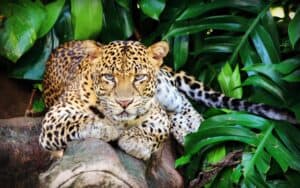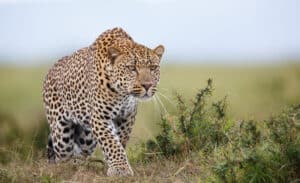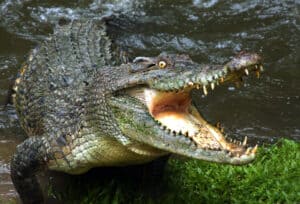Continue reading for our analysis...
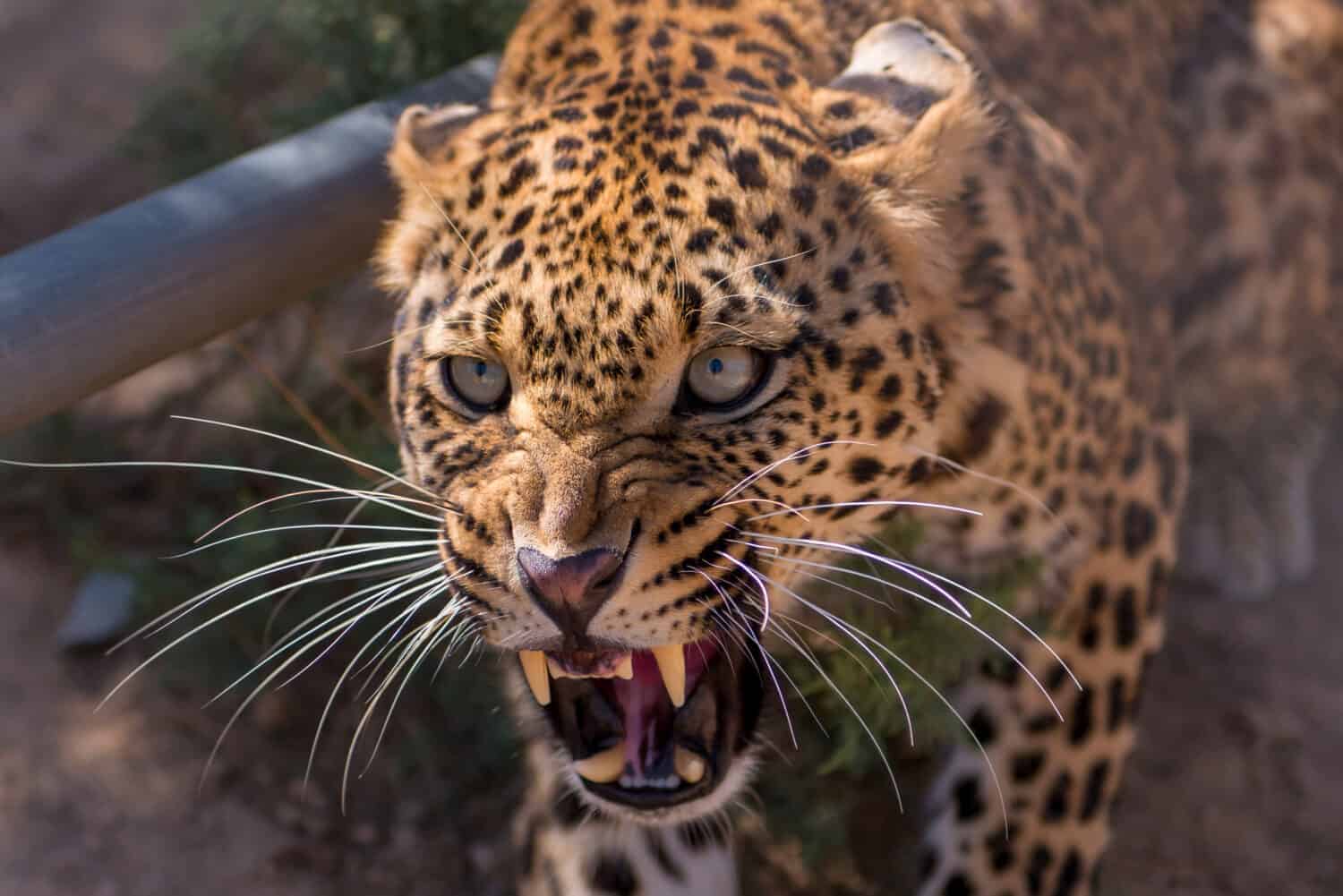
Many diverse creatures call the untamed tapestry of Africa home, including the elusive leopard and the intimidating Cape buffalo.
Leopards are the ultimate master of disguise – this big cat is a stealthy shadow in the grasslands and forests, with its coat of stunning golden hues and black rosettes. Possibly the ninjas of the animal kingdom, they often vanish into thin air, only to reappear with their prey hoisted high in the branches of a tree.
The Cape buffalo is a beast that certainly commands respect. With their hulking size, sweeping horns, and a stare that means business, these herbivores are no pushovers. Don’t let their plant-eating habits fool you – when riled, an Cape buffalo is one of the most dangerous animals you could encounter.
In the video below, we see what happens when these two animals clash. What should have been an easy kill turns into a very uncomfortable experience! Check out some interesting facts about these mighty African creatures to get a better picture of this kind of encounter.
What Do Leopards Eat?
The versatile and ever-adapting leopard prefers a wide variety of foodstuffs, sometimes including the calves of massive Cape buffaloes, if they think they can get away with it. The leopard we see in the clip below did bite off more than he could chew, though!
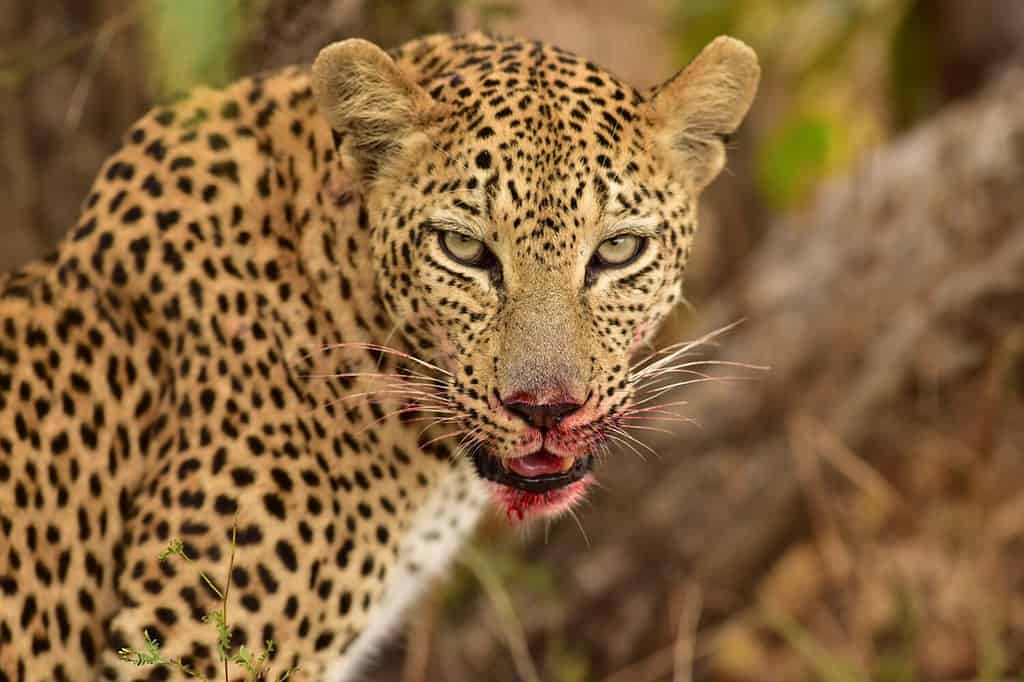
The name leopard, derived from Greek, literally means spotted
lion
.
©Sheri Lim/Shutterstock.com
Agile climbers and powerful hunters, leopards are the embodiment of feline grace and strength. With plenty of tricks up their sleeve, leopards are wary predators in regions across Africa and surrounding areas.
Cape Buffaloes Aren’t To Be Messed With
One way to think of Cape buffaloes is that they’re the brawny socialites of the African plains, hanging out in enormous herds. These herds will signal each other of danger and coordinate the right response when things go south. Whether the plan is to retreat or charge at full speed, as seen in the video below, their solo power is definitely a force to be reckoned with – get several buffaloes involved, and it’s bad news for their opponent!
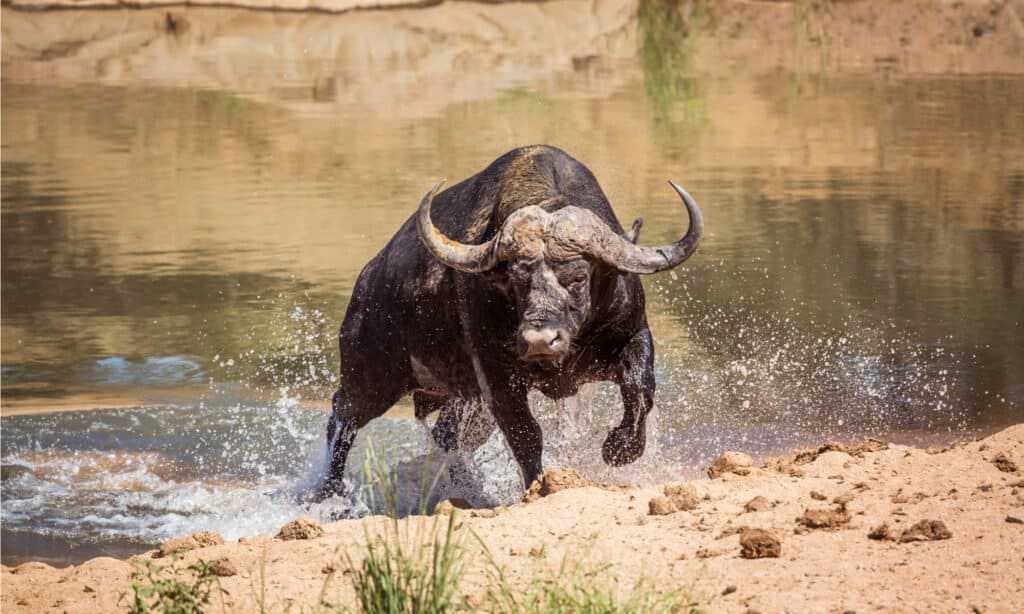
Despite weighing as much as a ton, Cape buffalo can race up to 40 mph, jump up to 6 feet vertically, and quickly pivot to combat predators.
©PACO COMO/Shutterstock.com
The size of a Cape buffalo herd can vary greatly depending on multiple factors, including seasonal elements like rainfall. Herds have commonly been observed to range anywhere from 50 to 1,000 or more individuals.
What Are the Normal Defense Mechanisms of a Cape Buffalo?
Cape buffalo are well-known for their formidable defense mechanisms. They are a very large and powerful bovine species that can weigh up to 2,200 pounds and stand up to 6 feet tall. Their size and strength make them a formidable opponent against predators.
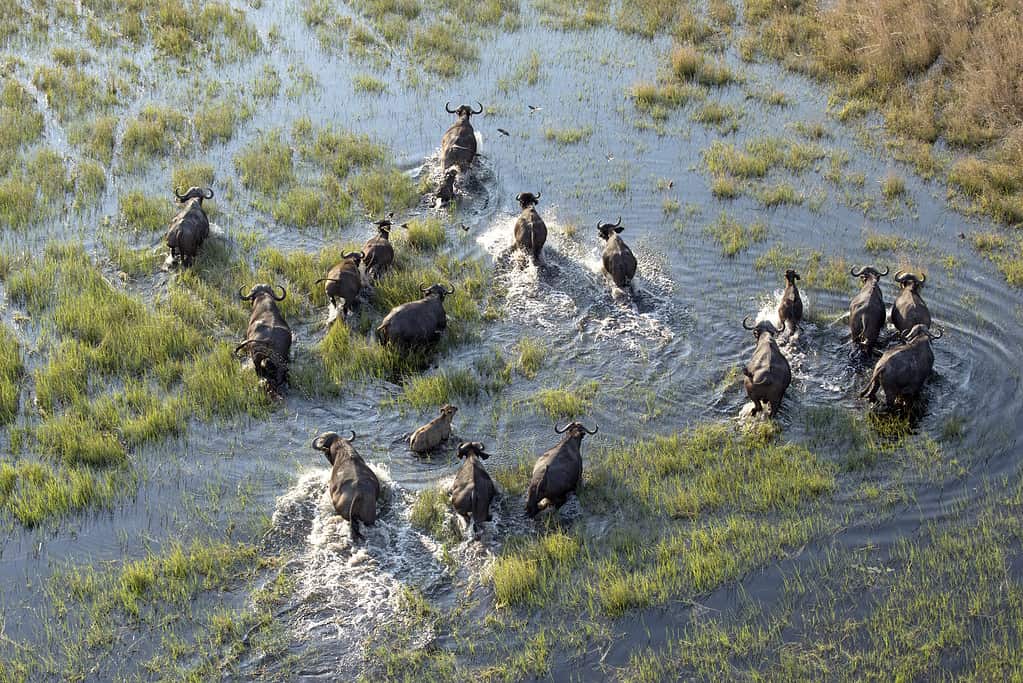
Buffalo herds will defend their young calves ferociously.
©2630ben/iStock via Getty Images
Cape buffalo employ several techniques to protect themselves from danger. They are very social animals and typically live in herds of up to hundreds of individuals. When danger is present, the herd will form a defensive circle with the calves in the center. This gives the calves protection from predators while the adult buffalo faces outward to defend the herd.
The horns of the cape buffalo are also a powerful defense mechanism. When threatened, the buffalo will charge at the predator and use their horns to push or stab them. They are very powerful and can easily injure or even kill an attacking predator.
In addition, the cape buffalo have strong legs and hooves, which they use to kick and trample predators. If all else fails, the buffalo will run away from the predator as a last resort.
Thank you for reading! Have some feedback for us? Contact the AZ Animals editorial team.




